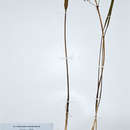en
names in breadcrumbs


Burnatia is a genus in the family Alismataceae. It includes only one currently recognized species, Burnatia enneandra. It is native to tropical and southern Africa from Senegal to Tanzania to South Africa.[1][2] Among genera of the Alismataceae, it can be distinguished by not having a differentiated perianth (in Burnatia the petals are reduced), and being dioecious, with male and female flowers on separate individuals. Male flowers have 6 to 9 stamens and female flowers have many carpels and up to 2 staminodia.[3]
{{cite journal}}: Cite journal requires |journal= (help) Burnatia is a genus in the family Alismataceae. It includes only one currently recognized species, Burnatia enneandra. It is native to tropical and southern Africa from Senegal to Tanzania to South Africa. Among genera of the Alismataceae, it can be distinguished by not having a differentiated perianth (in Burnatia the petals are reduced), and being dioecious, with male and female flowers on separate individuals. Male flowers have 6 to 9 stamens and female flowers have many carpels and up to 2 staminodia.